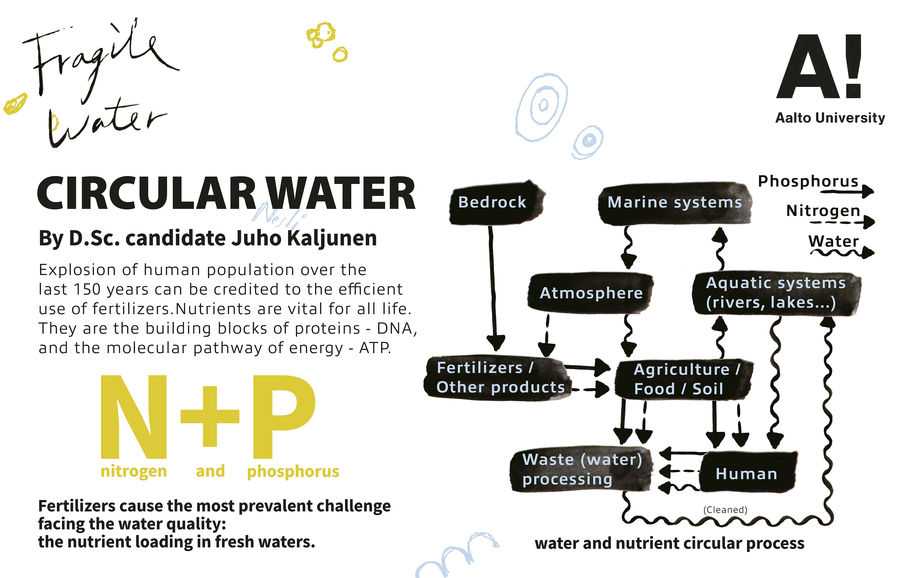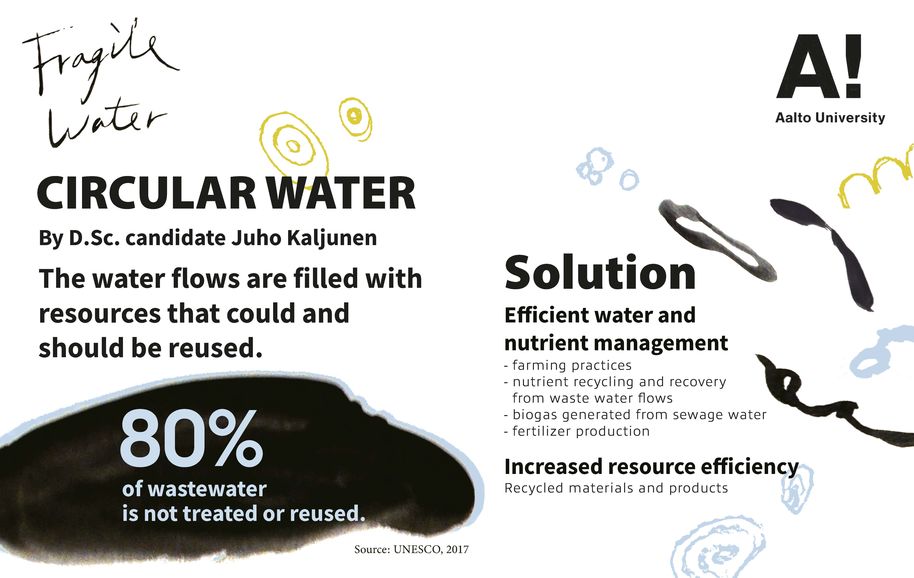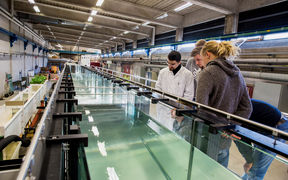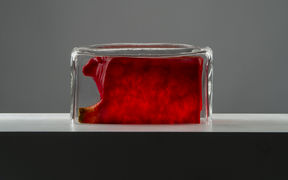How can wastewater become a resource?

Aalto University's design students and water researchers joined forces to visualise sustainable water solutions in the Fragile Water exhibition, showcased at Helsinki Airport in 2019.
'Nutrients, like phosphorus and nitrogen, are as vital for growth as water itself. In fact, the great explosion of the human population over the last 150 years can be credited to the efficient use of fertilisers, which contain these important but now overly abundant nutrients. With finite natural resources and energy intensive production, we need to manage all available resources more efficiently to ensure a sustainable future for our Earth’s growing population.
We already know some ways to make this happen. Recycled materials and products are actually a good method to increase resource efficiency. The world’s water flows are filled with resources, including chemical elements or the purified water itself – all of which unfortunately are still underutilised. Globally the majority of wastewater, 80 percent, is not treated or reused, which means the valuable materials in wastewater are not only lost but become an environmental burden.
The economic feasibility of the technology needed to recover these valuable materials is not yet where it should be. Not to mention, material labelled as ‘waste’ has an unnecessary image problem.
Moving towards a circular economy, however, remains a necessity. Efficient water and nutrient management require creative solutions in several fields; farming practices, nutrient recycling and fertilizer production can all enhance resource and energy efficiency. Thankfully, a great deal of research has been put into this topic: at Aalto, for example, we’re carrying out studies to recover nitrogen with hydrophobic membranes and by growing algae in wastewaters.'
Juho Kaljunen, Doctoral student

Water and Environmental Engineering
Water and Environmental Engineering research at Aalto University aims to find solutions to decrease resource scarcity and to support sustainability. Our research is divided into two strategic areas: global water issues and sustainable circular economy, which are further divided into four research entities.

Fragile Water exhibition highlights vulnerability of water resources
Water resources are limited and vulnerable in many places in the world. Design students and water researchers joined forces to visualise sustainable water solutions in the Fragile Water exhibition.

Read more news

Get to know us: Associate Professor Maria Sammalkorpi
Sammalkorpi received her doctorate from Helsinki University of Technology 2004. After her defence, she has worked as a researcher at the Universities of Princeton, Yale and Aalto.
Aalto computer scientists in ICML 2024
Computer scientists in ICML 2024
Getting bacteria into line
Physicists use magnetic fields to manipulate bacterial behaviour